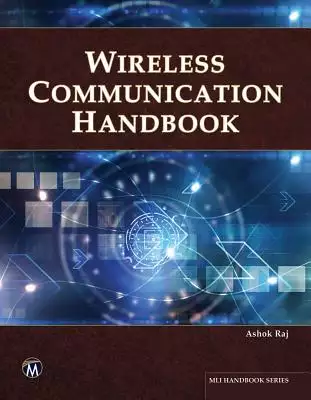Mobile carrier的問題,我們搜遍了碩博士論文和台灣出版的書籍,推薦Raj, Ashok/ Musa, Sarhan M. (EDT)寫的 Wireless Communication Handbook 和Ergen, Mustafa的 Mobile Broadband都 可以從中找到所需的評價。
這兩本書分別來自 和所出版 。
國立臺灣科技大學 工業管理系 喻奉天、郭伯勳所指導 Novenda Ayu Faradilla的 An Optimization Model for the Last-Mile Delivery and Return Under Carbon Tax Policy (2021),提出Mobile carrier關鍵因素是什麼,來自於last-mile delivery、last-mile return、carbon tax policy、mixed-integer non-linear programming、click-and-collect。
而第二篇論文國立臺灣科技大學 應用科技研究所 氏原真樹、蘇威年所指導 張文馨的 聚苯胺奈米複合材料的製備表徵在超級電容器的應用 (2021),提出因為有 聚苯胺、超級電容器、印刷式導電墨水、凝膠電解質的重點而找出了 Mobile carrier的解答。
Wireless Communication Handbook

為了解決Mobile carrier 的問題,作者Raj, Ashok/ Musa, Sarhan M. (EDT) 這樣論述:
The book is a comprehensive study of the methods and standards used in wireless communications. Selected topics include cellular technology, digital transmission, digital carrier systems, error control, mobile phone technology, sim/smart cards, wireless propagation, multiple access, mobility mana
gement, AMPS/ETACs/D_AMP, global systems, CDMA, MIMO, SDMA systems, PSTN, wireless networks, Wi-Fi, mobile satellite systems, wireless Internet, Mobile TV, short range devices, Bluetooth, PDAs, 4G technologies, and more. Technical concepts that explain the design and planning of wireless communicati
on are presented in detail. Multiple-choice questions have been included for use as a textbook.
Mobile carrier進入發燒排行的影片
Part of Japan illustrations set for the 2021 year DOCOMO (Japanese mobile carrier) calendar.
Read more about this project here:
https://mateuszurbanowicz.com/thumbs/docomo2021/
All the images were painted digitally using the Apple iPad Pro and the painting application Procreate.
File size: width 6000px
Brushes: my own brushes are available here: https://mateuszurbanowicz.com/tools/
All the images and brands are copyright by NTT DOCOMO, INC.
This image was made as a part of commissioned work but this video was not paid for and does not endorse any product.
Feel free to check out my other stuff:
Gumroad: https://gumroad.com/mateusz_urbanowicz
Patreon: https://www.patreon.com/mateuszurbanowicz
Website: http://mateuszurbanowicz.com
Blog: http://mattjabbar.tumblr.com
Twitter: https://twitter.com/gommatt
Instagram: https://www.instagram.com/mateusz_urbanowicz
An Optimization Model for the Last-Mile Delivery and Return Under Carbon Tax Policy
為了解決Mobile carrier 的問題,作者Novenda Ayu Faradilla 這樣論述:
Due to COVID-19, more and more people reduce their trips to stores and choose to shop online. However, online shopping takes a long time for customers to receive their orders due to the delivery process. Customers are demanding to get their daily needs as soon as possible. In Indonesia, some grocer
y stores and convenience stores have started to offer click-and-collect or in-store pickup services in addition to home delivery, giving customers an option of getting their orders faster. Home delivery and in-store pickup in omnichannel retailing may increase the carbon footprint due to last-mile d
eliveries. The customers' transportation to the stores can also increase the carbon footprint. One way to reduce the carbon footprint is by implementing a carbon tax policy that imposes a tax on greenhouse gas emissions. This research aims to determine which store serves customers as an in-store pic
kup location, where customers can pick up their orders at the nearest store. In addition to delivery services, this research considers product return services with similar options. Each store can serve returns through a carrier (carrier ship return) or an in-store return location, where customers ca
n return products. The carbon tax policy is considered to evaluate the environmental impact of providing last-mile delivery and return options. We also consider demand uncertainty to represent a more realistic condition. A Mixed Integer Non-linear Programming model is developed to solve the problem.
The objective is to minimize the total cost incurred by the firm, customers, and the carbon footprint. By comparing the results of minimization without environmental and with environmental in the optimization process, the result is that the calculation by considering the environmental side can redu
ce the cost in the optimization results.
Mobile Broadband

為了解決Mobile carrier 的問題,作者Ergen, Mustafa 這樣論述:
Dr. Ergen is a Ph.D from Berkeley and has worked extensively in Silicon Valley as well as been an adjunct instructor at both Berkeley and Stanford in recent years. He is coauthor of the successful book, Multi-carrier Digital Communication 2E by Bahai et al, in addition to authoring the first edition
of this book.
聚苯胺奈米複合材料的製備表徵在超級電容器的應用
為了解決Mobile carrier 的問題,作者張文馨 這樣論述:
近來,為了給移動裝置提供穩定的可持續能源,電池和超級電容器等儲能設備的發展逐漸成熟。本研究重點在使用聚苯胺 (PANI) 的超級電容器,並考慮了用於可穿戴超級電容器的PANI奈米複合材料。由於PANI容易形成納米纖維,相互纏繞並引發大分子沉澱,因此添加二氧化矽奈米粒子(直徑:12奈米)作為凝結核,形成具有二氧化矽-PANI殼層結構的球狀奈米粒子。利用 SEM 和 TEM進行表面分析,發現二氧化矽-PANI呈現直徑為 200-300 nm 的球狀聚集體。為了防止PANI過度聚集,在反應溶液中加入保護劑:聚(丙烯酸)(PAA)。PAA的作用與 pH 值有關,即:PAA交聯 PANI在pH 5左右
時會形成凝膠;而二氧化矽-PANI顆粒直徑約20 nm的奈米分散體在pH 3以下表現穩定。將二氧化矽-PANI奈米複合材料透過瓊脂糖凝膠固定在不鏽鋼網上,並分析其電化學行為。由於PANI上的表面覆蓋了PAA進而增加了電荷轉移電阻(Rct),但並沒有因此使溶液電阻增加。再者瓊脂糖凝膠中的二氧化矽-PANI 表現出約 100 F/g 的比電容,但二氧化矽-PANI-PAA 奈米複合材料在pH 4的電解質中量測到的比電容從約 40 F/g(含 1 wt.% PAA)降至約 6 F/g(含1.5-2.5 wt.% PAA)。另外觀察到在pH 3或更低的電解質中時,瓊脂糖凝膠會崩解。這說明瓊脂糖凝膠在酸
性環境中處於不穩定的狀態,因此需要為可穿戴超級電容器的聚苯胺墨水製備穩定的凝膠電解質進行更深入的研究。